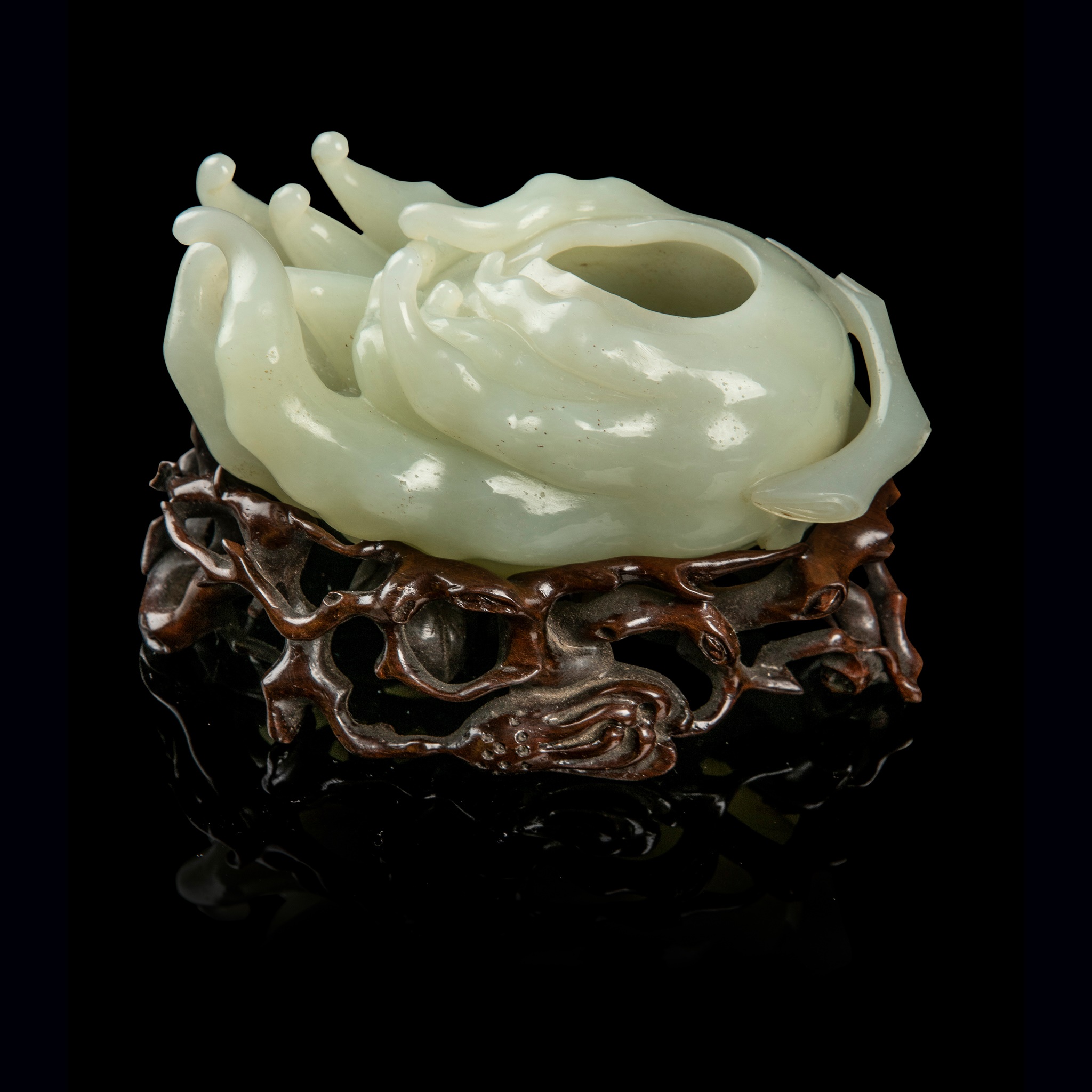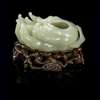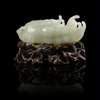
Lot 26

PALE CELADON JADE 'FINGER CITRON' WATER POT
QIANLONG PERIOD






Fine Asian & Islamic Works of Art
Auction: 14 May 2021 at 11:00 BST
Description
清乾隆 青白玉雕佛手形水丞
elegantly rendered as a finger citron, also known as 'Buddha's hand' for its shape, borne on a short twig with the finger-like sections gently curling upwards, the top of the fruit with a circular opening and body hollowed as a vessel, the stone of even translucent pale green colour, on a fitted wooden stand carved in openwork with various small finer citrons on leafy branches
Dimensions
9cm wide
Footnote
Provenance: property of a gentleman; formerly in the collection of an European diplomat Sven Hedin (1865-1952) who acquired it from Hong Kong in 1930s
Note: Finger citrons are not edible unless preserved with salt or sugar, but were known to have been used by Empress Cixi to fragrance rooms in the Palace. Their auspicious symbolism derives from the play on the Chinese word for finger citron, foshou, homophonous with the words for blessings, fu, and longevity, shou. Hence, they were a popular subject in jade carvings of the Qing dynasty. A comparable jade water holder in the shape of a Buddha's hand citron formerly in the Qing Court collection is now in the collection of the National Palace Museum, Taiwan, collection number Gu Yu 故玉 3166; another Qing dynasty finger citron-form jade box and cover was in the C.T. Loo & Co., New York collection and sold at Christie's Live Auction 2553 on 23 Mar 2012, lot 1943





